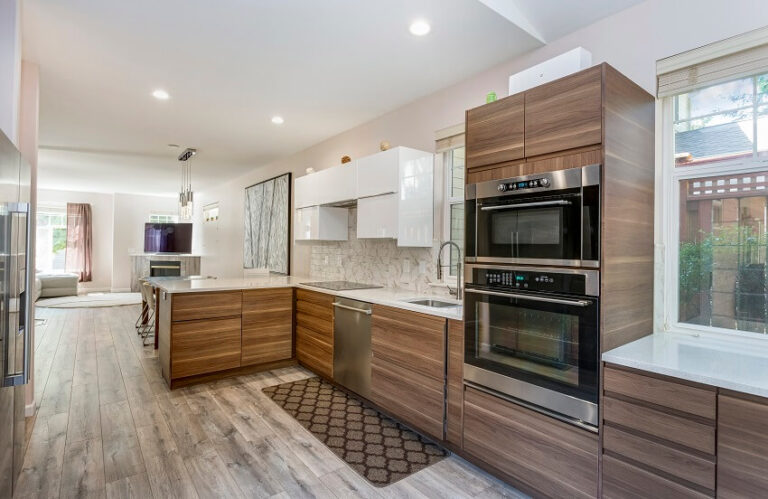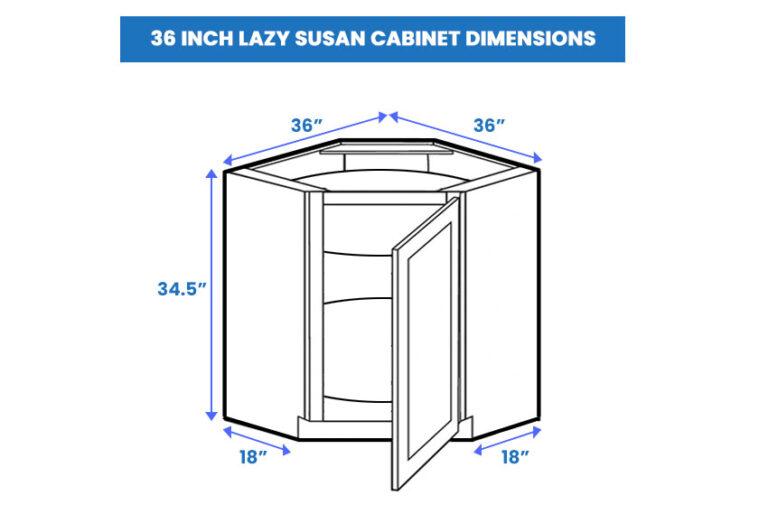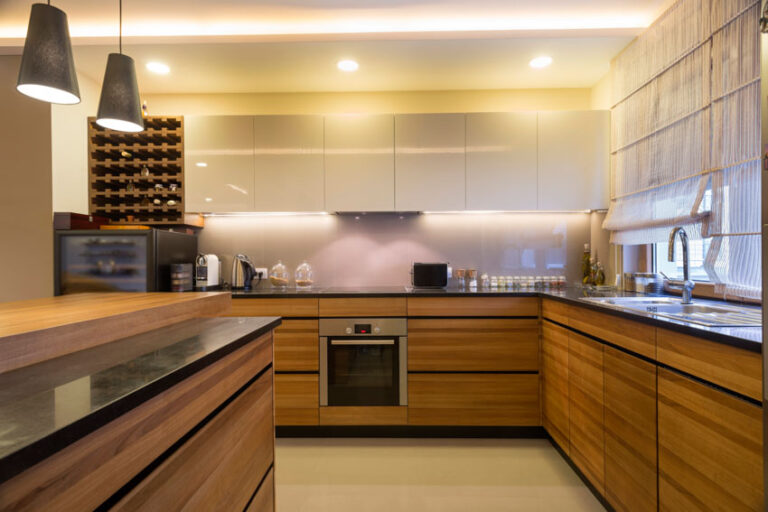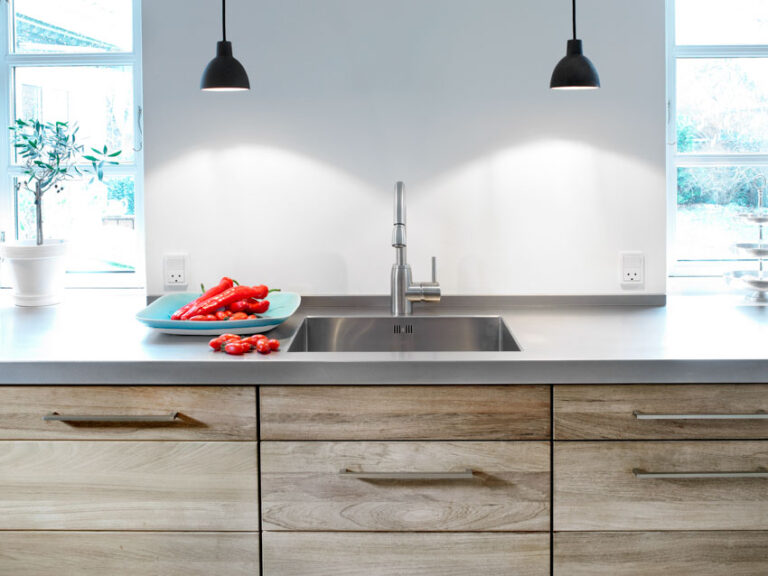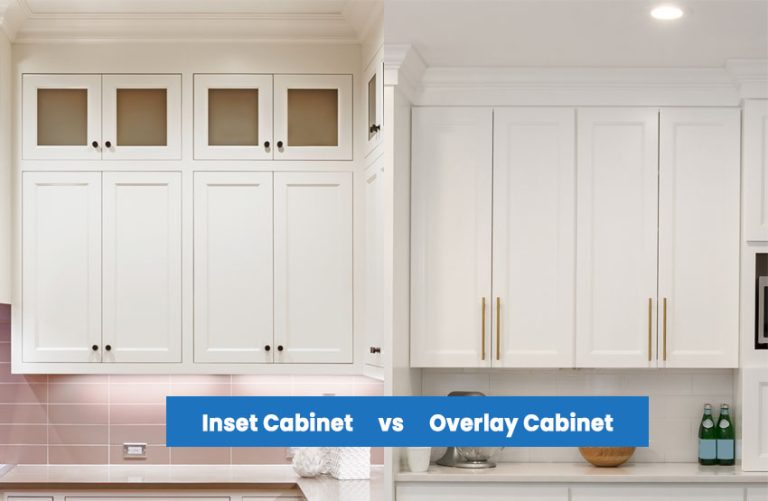Dolomite Countertops Pros And Cons
Here are the dolomite countertops pros and cons, including what it is, its advantages & disadvantages, cost, care tips, and differences from other kitchen countertop materials.
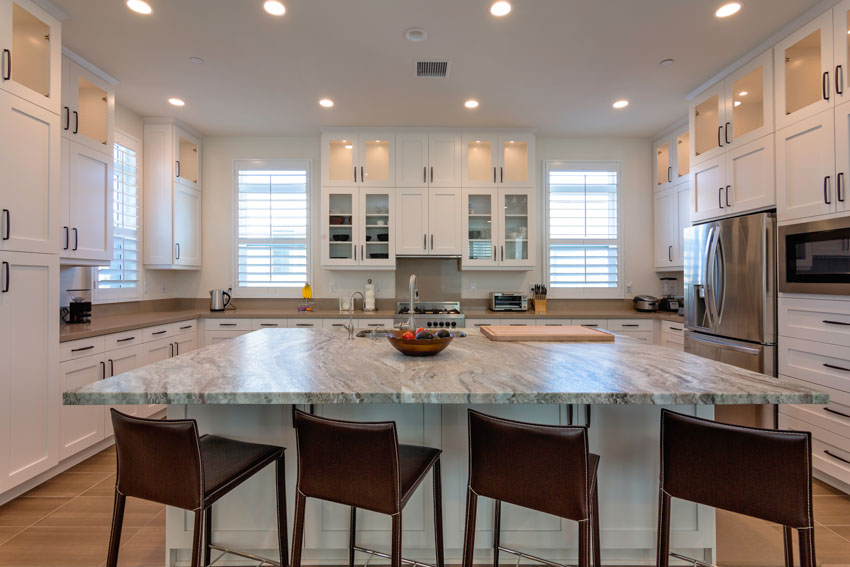
With gray and white countertops becoming trendy, there has never been a better time to explore dolomite countertops. This lesser-known stone is quickly gaining popularity as a beautiful alternative to marble for those seeking a more durable and affordable solution.
Natural stone worktops are growing more popular due to trends and new aesthetic concepts, with marble and granite being among the most popular choices.
However, they may be costly or difficult to maintain, and dolomite provides a comparable aesthetic with some extra lifespan advantages. Is it, nevertheless, a decent option for countertops?
While many people pick dolomite for their countertops, there are a few things to consider. This article will provide you with all the benefits and drawbacks to consider.
What Is Dolomite Stone?
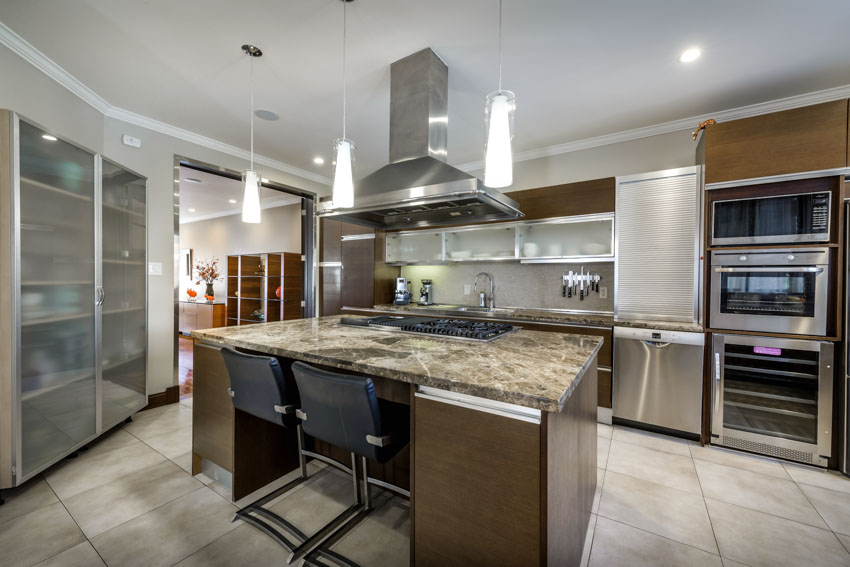
Dolomite, commonly known as dolostone or dolostone, is a mineral sedimentary rock that you can find in stone reserves all over the globe.
It arises when magnesium-rich groundwater alters lime mud and limestone after depositing. The material is defined as having a similar appearance to marble but with better physical properties.
The distinctions between dolomite and granite, which forms in magma chambers under the earth’s surface, are noteworthy. Dolomite is a common stone that may be found all over the globe, with the most well-known being the Dolomite Alps in Italy.
Dolostone is comparable to limestone in composition, and the two forms of rock have similar coloration, ranging from white to gray.
Their prominence in the building business is another commonality between the two. Dolomite is neither as complex nor as delicate as quartzite or marble.
Let’s look at the features of this material so you can weigh the countertop’s pros and cons and determine if they work for your needs.
Dolomite Advantages for Countertops
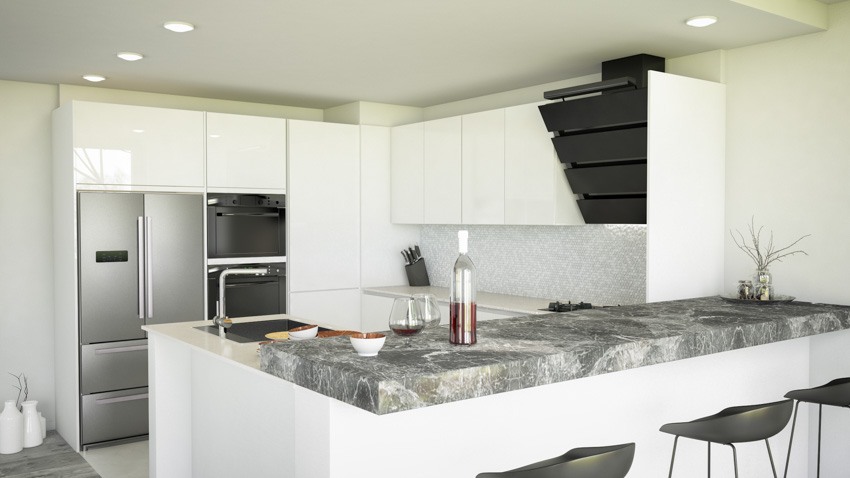
Scratch Resistance: Dolomite is sometimes between marble and granite in terms of hardness. It is a fantastic alternative to marble, and it is much more scratch-resistant.
However, do not expect it to be as scratch-resistant as granite or quartzite. Glass and metal can harm dolomite worktops; therefore, you should always use cutting boards and handle silverware with care.
Longevity: A dolomite countertop surpasses marble and endures even longer. Consider that we are talking about stones that, with proper care, may live for decades. The stone is very durable and unlikely to crack or chip.
Stain Resistance: Dolomite has a lower liquid absorption rate and is less acid-sensitive than marble. Nonetheless, it needs sealing regularly (most likely annually). Acids are also a no-no; they will etch if exposed to acid.
Heat Resistance: Heat resistance is perhaps the dolomite’s most significant advantage over quartz countertops. The surface can store a lot of heat.
It retains heat better than many other materials, making it ideal for counters that support hot things, such as those used in the kitchen.
Of course, putting hot pots and pans directly on any countertop, regardless of the material, is never a good idea.
Pressure Resistance: While owners must always be cautious, the chances of these countertops splitting due to pressure are far lower than many other materials.
Dolostone is a pressure-resistant material, which is essential for counters that will withstand a variety of weights. It has a Mohs hardness grade of 3.5–4, higher than marble.
A more excellent hardness grade makes it a long-lasting and sturdy countertop that withstands wear and tear.
Variety of Styles: One of the most appealing properties of dolomite is that it resembles marble since the stone often has streaks of varied colors and tints.
The aesthetic attractiveness and several other advantageous physical characteristics make it an excellent countertop option.
Most varieties come in gray and white tones. Super White, Avalanche, Donatello, and Milano Venato Dolomite are the popular monotone variations.
This stone has a sleek, smooth, and shiny appearance when treated. The fossilized mineral patterns on each stone slab are distinct, yet all varieties have a clear to translucent, pearly shine.
Dolomite Disadvantages for Countertops
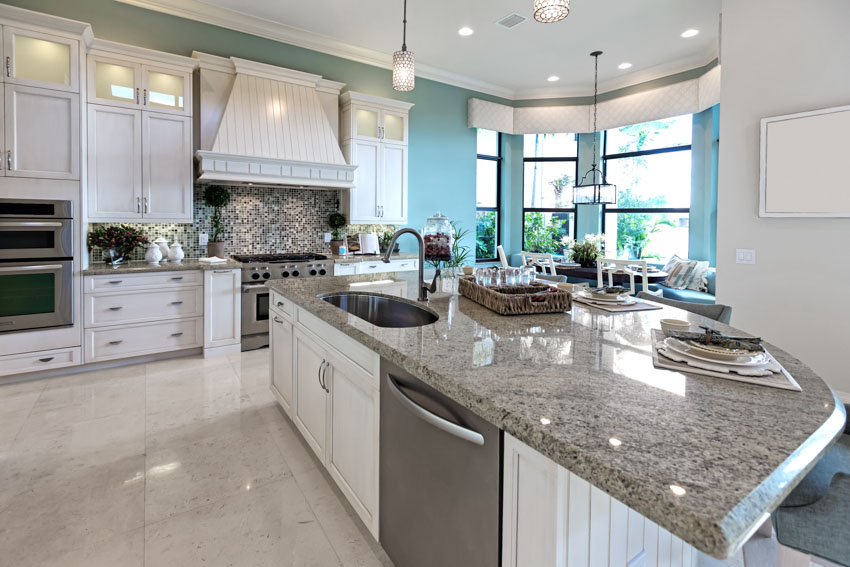
Although dolomite looks ideal for countertops, there are a few drawbacks to consider before purchasing this material. However, you may mitigate many of these disadvantages with careful maintenance and care over time.
Susceptible to Etchings: While they are more rigid than marble or calcites, they are still softer than granite and are susceptible to scratches and etchings.
Granite has a more excellent hardness value on the Mohs scale, making it more durable.
Handling utensils, plates, cutlery, and other accessories with care is vital. Scratch tests are usually performed on sealed stone samples to determine their sensitivity to scratches, etchings, and fractures.
Susceptible to Stains: Even though these stone countertops are very durable, they may discolor with time.
No matter how solid, natural stone is porous to variable degrees and absorbs minute amounts of debris, moisture, and grease. These stains may be tricky when choosing lighter dolomite varieties.
Therefore, those choosing light hues of the material should be cautious. For example, acids such as lemon juice may etch or discolor the polish of a marble countertop in minutes.
On the other hand, dolomite can still be injured, but it would take longer before damage would occur.
Cost Of Dolomite Stone Countertops
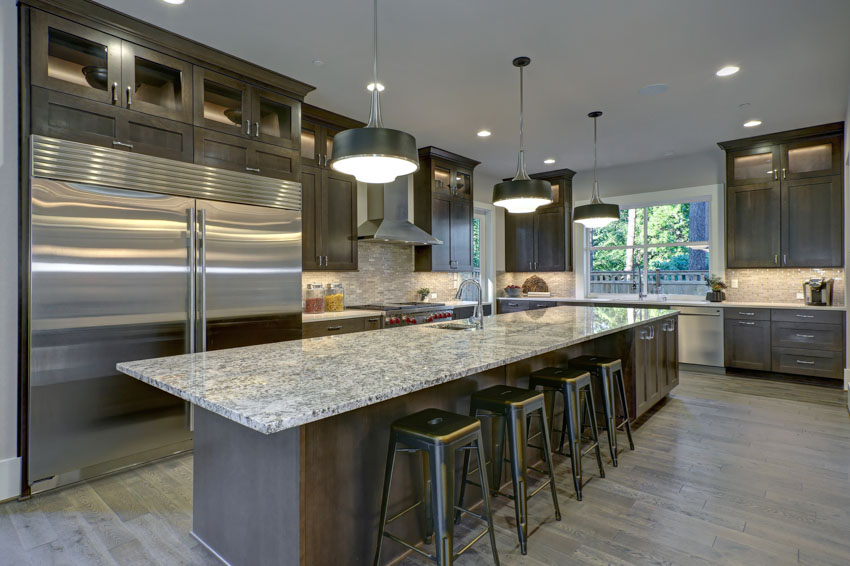
The dolomites are less expensive than marble, quartz, and even granite. You should always acquire a price from a local source to be sure.
One of the best reasons to choose these countertops is the reduced cost. Dolomite prices vary depending on the stone source, but they are typically in the same ballpark as quartzite and marble.
Some marble and Dolostone kitchen countertops are in the same price range as “entry-level” granite.
Care Of Dolomite Counters
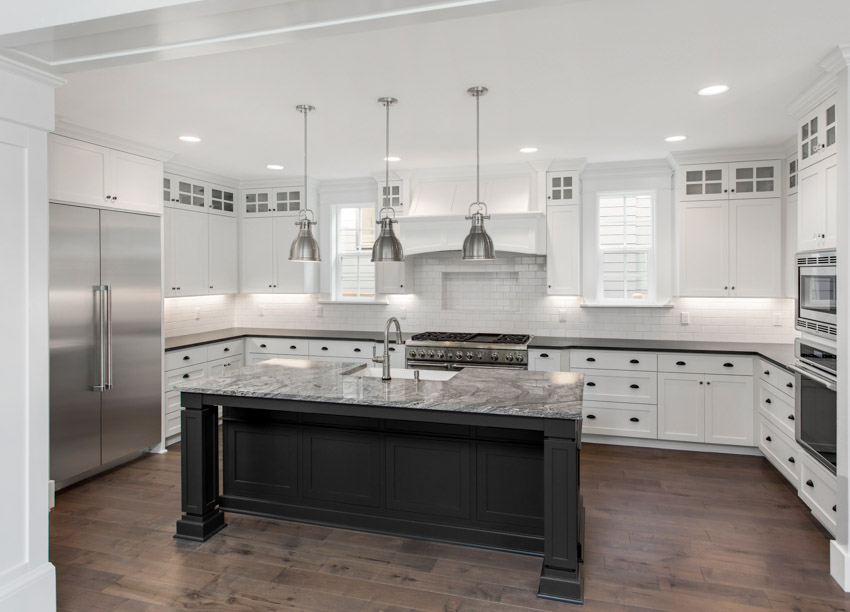
Dolomite itself is somewhat more rigid than marble but considerably softer than granite, making it susceptible to scratching. Also, dolomites are more resistant to acids and etching than marble or calcite.
Dolomite countertops are unquestionably more straightforward to maintain than marble worktops. You will need to incorporate sealing into long-term maintenance expenditures.
We recommend cleaning your dolomite countertops once a day. Avoid acidic cleansers like lemon juice or vinegar, ammonia, or other harsh chemicals.
If food or liquid spills on your countertop, wipe it up with a soft dishcloth right away. Oil, wine, fruit juices, and other substances may discolor unsealed stone surfaces.
Varying chunks of the stone, on the other hand, have different porosities. Some countertop regions may need more frequent sealing than others. Dribble hot water onto a countertop to test. If the water soaks into the surface, it is time to reseal it.
Get a decent-grade dolomite countertop sealer to seal your counter surface. Sealing takes 30 to 60 minutes and costs $30 to $50, depending on the size.
Follow the cleaner’s instructions, ensuring the stone surface is completely dry before beginning the sealing process. Work in tiny sections while sealing, allowing the sealer to soak for the specified period before proceeding to the next step.
Before utilizing the countertops, let the sealer cure for the required period (typically several hours or overnight).
Is Dolomite Good For Kitchen Counters?
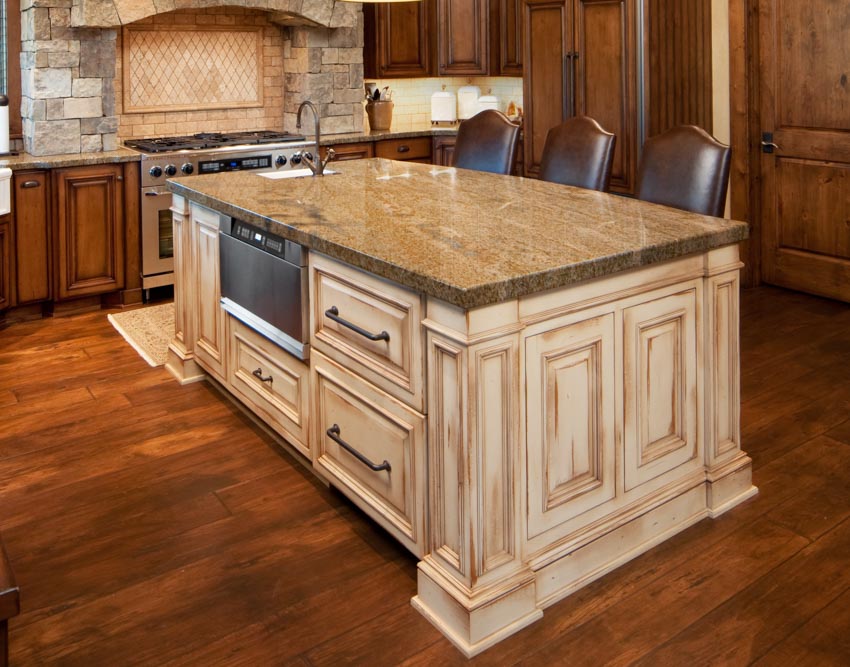
Yes, dolomite countertops are pretty adaptable and work well as a countertop. The natural stone is simple to get and relatively inexpensive to upkeep.
All it comes down to is a matter of personal taste. Any stone counter has advantages and disadvantages. Some stones need more care than others.
Because dolomite is more rigid than marble but softer than granite, it might get scraped if you are not cautious. Overall, it is a fantastic option for kitchen counters if you can administer specific sealing and maintenance.
Dolomite countertops generally outlive marble kitchen countertops, lasting years or decades if properly maintained. The stone is resistant to regular wear and tear, although it is not impervious.
Difference Between Dolomite And Quartzite
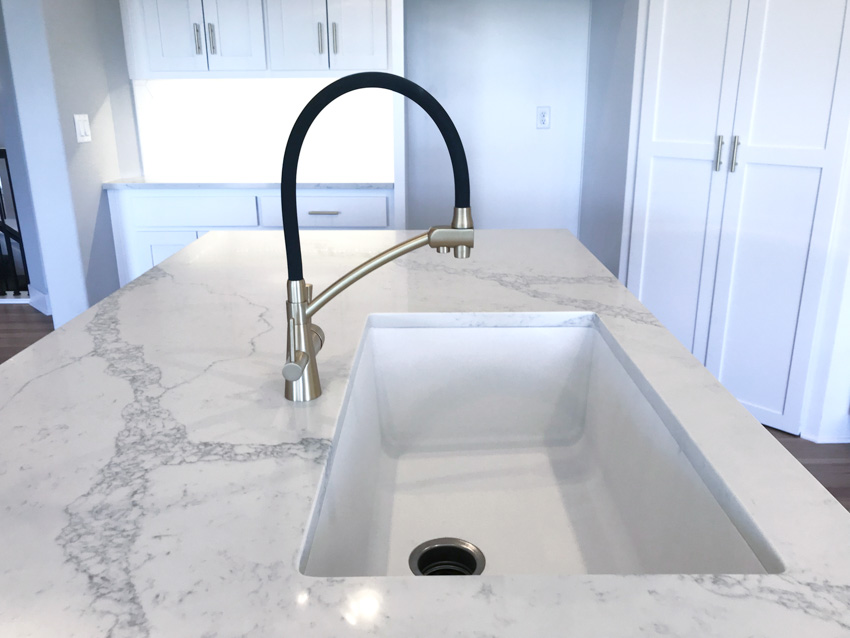
It is amusing to compare two rocks since they are not the same. Dolomite is a sedimentary rock that contains more than 50% of the stone as a mineral by weight. Quartzite is a non-foliated metamorphic rock that occurs when pure quartz sandstone metamorphoses—these rocks from various minerals.
It is worth noting that the durability of a dolomite countertop is somewhat lower than that of a quartzite countertop.
The dolomites create a beautiful fixture that one may use in the kitchen, baths, and other areas, but don’t expect them to function as well as quartzite or granite countertops.
Quartzite is more rigid and less scratch-resistant. However, both are very porous, with quartzite being somewhat more porous.
Dolomite should be thought of as a stricter type of marble in terms of performance. Like most natural stones, it is absorbent and needs sealing to avoid discoloration.
Although it outperforms actual marble in terms of performance, it may scratch and etch, so keep that in mind when installing in a kitchen.
Dolomite-Look Quartz Countertops
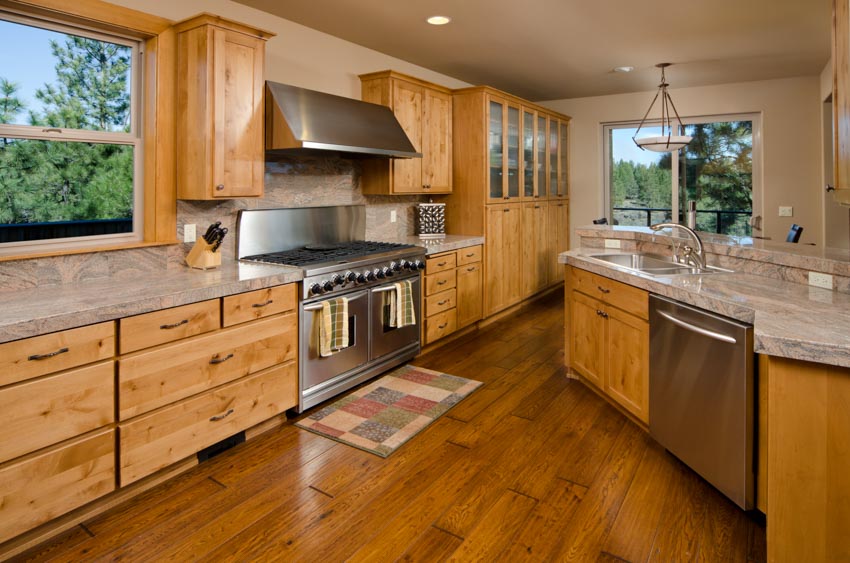
Quartz countertops that look similar to Dolomite are more often available in gray and white, and they frequently have streaks that make them seem more like marble than quartz, which is why they are so trendy right now.
Despite their rarity, you can find them in various colors, including brown, pink, black, and green. It is a beautiful alternative to natural stone countertops, and quartz is considered by many in the countertop business to be more durable than marble.
Dolomite-looking quartz creates a beautiful countertop that you may use in the kitchen, baths, and other areas.
Dolomite Vs Granite
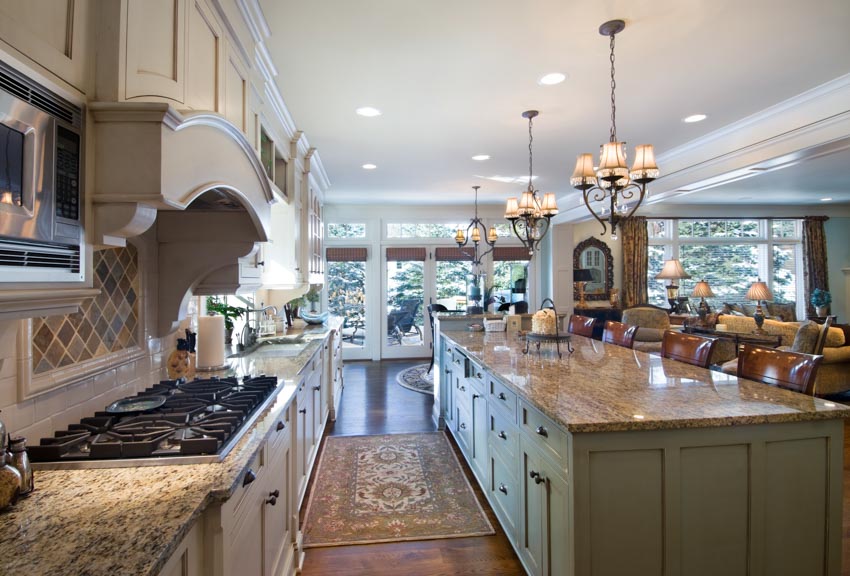
When it comes to durability, granite is unquestionably the best option. Granite is more permeable and more formidable than dolomite. These two stones are opposites in terms of appearance.
Dolomite is your choice if you want a white stone with minimal mobility. Granite has a different physical look than marble and comes in a range of mottled hues. The color variance is due to melted stone inside the granite.
Granite countertops are the more lasting alternative because of their resistance to cracks and chipping. The cost is highly dependent on the artwork in question.
However, since it is a more uncomplicated stone to deal with, you will save money on fabrication.
Marble will make you appear out of this world, but it is also the most delicate option. Quartz has a lot of alternatives, is durable, and requires little care, but it can’t withstand a lot of heat or sunshine.
Dolomite gives a fantastic appearance at a lower cost, but even if it’s simpler to maintain than marble, it still requires a lot of maintenance. Regardless of the intended function, the stone is becoming more desirable for countertops.
Dolomite countertops are a fantastic option since they provide various advantages in terms of utility and durability and a strikingly distinctive and shiny aesthetic appeal at a lesser cost.
See more related content in our article about solid surface countertops on this page.

